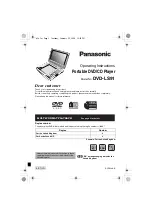
AFX SERIES® OPERATION MANUAL
SECTION 7:
Rear Panel, Connectors and Protection
Entire Contents Copyright
2018 by Pacific Power Source, Inc. (PPS)
• All Rights Reserved • No reproduction without written authorization from PPS.
AFX Series Power Source Operation Manual
Page 165 of 402
Safety Notices” before making any load connections.
7.1.1
Output Power Connector Rating and Isolation
Maximum rated output voltage:
300V rms AC, 425Vdc
Maximum Current Rating:
60A
Connector Type:
Phoenix Contact SPC 16/ 6-STF-10, 16 - 1711417
Designated Use:
AC or DC Load Connection
Isolation Rating:
600V
Wire Stripping Length:
18 mm
7.1.2
Wire Size
A major consideration in making load connections is the wire size. The minimum wire size is
required to prevent overheating and to maintain good regulation. It is recommended that
the wires are sized large enough to limit the voltage drop at the maximum current rating of
the AC power source to less than 0.5V per lead.
Wire size also depends on ambient temperature and total wires in the cable bundle. For
example, for the full 41.7 amp current capability of a single output, at an ambient
temperature of 30 °C, in a bundle of not more than three 75 °C rated wires, common
electrical codes would recommend AWG 8 size (~10 mm^2).
7.1.3
Connecting a UUT
When setting up for a new test and connecting any equipment to the AC power source,
proceed as follows:
1.
Always make sure the AC power source is turned OFF at the POWER switch when
making any wire connections.
2.
Check that the output of the equipment under test is OFF.
Note: Some power equipment’s output may still be energized even if the equipment
has been turned off or its output is turned off. This is especially true for AC power
sources.
Note: When working with batteries, it is recommended to provide a suitable
disconnect relay or switch so the AC power source can be physically disconnected
from the battery for handling purposes.
3.
Connect one end of the load wires to the output terminals on the rear panel.
4.
Check the polarity of the connections and connect the other end of the load wires to
the input terminals of the equipment under test.
















































